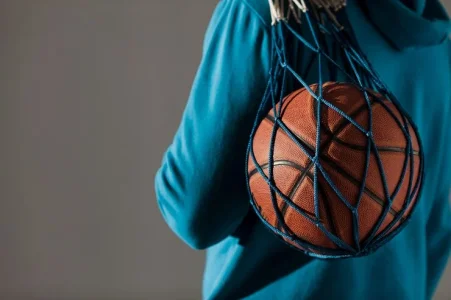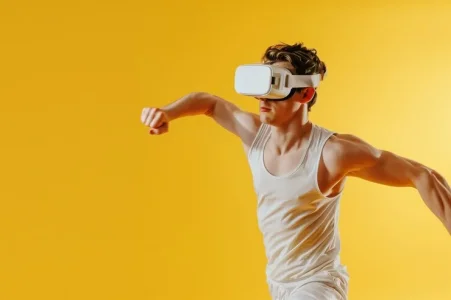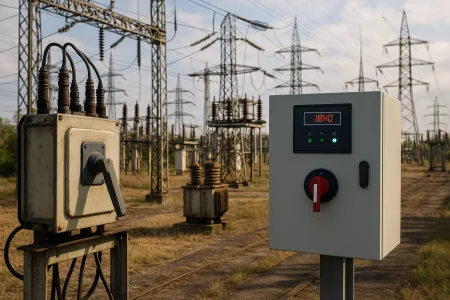With time, basketball and the techniques used in training basketball players have changed. Here comes virtual reality (VR) – a technology that is changing how players practice their game skills by providing an as-close-as-it-gets-to-actual experience. It is not just a gadget for the geek; it is slowly finding its way into training players of all levels who seek new and better ways of improving their performance in the field.

Dribbling in VR enables players to face virtual players, which gives various difficulties similar to real game challenges. It's like the live format in the Melbet app but for professionals. This assists the players in developing their hand-eye coordination, their response to pressure, and decisions to be made while playing, all without actually having to set foot on a physical tennis court. Likewise, in defensive training, VR offers situations that make the players decipher attacking patterns, learn how to respond defensively, and make them sharp.
Every virtual session is intended to challenge players to the edge and help them understand their actions, which can be corrected promptly. This direct feedback loop is essential for fast improvement and fixing the habits translated into actual games. Thus, incorporating VR into basketball players' training programs is an effective way for them to improve their technical and tactical performance and become more effective athletes.

A collegiate basketball player not making good free throws had to use VR to practice more. With the help of realistic game conditions, the player could increase his free throw shooting by more than 20% during a single season. The experience made him ready and calm whenever he was involved in actual games, which, in turn, improved his confidence while he was on the line.
Firstly, the two main factors that relate to the availability and affordability of a product are always a consideration. To get high-quality VR equipment and software, one may need a lot of money, which may be challenging, especially for small teams or individual athletes. This cost barrier may hinder the utilisation of VR technology, thus causing some teams to miss out on training opportunities due to their financial capacity.
Secondly, there is the problem of technological constraint. While VR technology has advanced dramatically, several difficulties exist with simulating a real basketball game's actual feeling and movement. Some of the challenges include delay, restricted range of vision, and the absence of haptic feedback, which reduces the training session's realism level. These limitations may cause a gap between virtual and actual court training.
Another possible issue is the overuse of technology. As VR is increasingly incorporated into the training regimen, athletes may rely on virtual reality too much and fail to practice the fundamentals in a traditional way that builds necessary physical and mental attributes. This means a balance must be struck to avoid abandoning conventional training practices in favour of VR.
Mitigating these issues will be crucial to optimising the use of VR in training programmes of basketball players while reducing adverse effects.
Skill Improvement of the Players Through VR
Virtual reality is becoming a new way of training basketball players by emphasising skills such as shooting, dribbling and defensive moves. With VR, a player can practice shooting and do it in various game scenarios that are not possible in real life. Players can take as many shots as they wish from multiple positions and distances and modify their swing during the practice, depending on the feedback from the system.
Dribbling in VR enables players to face virtual players, which gives various difficulties similar to real game challenges. It's like the live format in the Melbet app but for professionals. This assists the players in developing their hand-eye coordination, their response to pressure, and decisions to be made while playing, all without actually having to set foot on a physical tennis court. Likewise, in defensive training, VR offers situations that make the players decipher attacking patterns, learn how to respond defensively, and make them sharp.
Every virtual session is intended to challenge players to the edge and help them understand their actions, which can be corrected promptly. This direct feedback loop is essential for fast improvement and fixing the habits translated into actual games. Thus, incorporating VR into basketball players' training programs is an effective way for them to improve their technical and tactical performance and become more effective athletes.
Success Stories of VR
An NBA team's training was recently enhanced with VR as it sought to improve its shooting precision. The Melbet Facebook actively covered this. The team's field goal percentage rose after several weeks of the VR sessions. This enabled the players to take shots at goal under several game-like conditions and fine-tune them based on virtual defenders and pressure.
A collegiate basketball player not making good free throws had to use VR to practice more. With the help of realistic game conditions, the player could increase his free throw shooting by more than 20% during a single season. The experience made him ready and calm whenever he was involved in actual games, which, in turn, improved his confidence while he was on the line.
Cognitive and Psychological Benefits
VR training offers several cognitive and psychological benefits by replicating high-pressure scenarios: VR training offers several cognitive and psychological benefits by replicating high-pressure scenarios:- Mental Preparation: This is important so athletes can rehearse themselves in practice mode and develop their mindsets for a real game.
- Enhanced Focus: This way, the ability to concentrate and focus is trained in VR, which is beneficial in actual games because they are intense.
- Reduced Game-Day Anxiety: Since the high-pressure condition familiarises the players with their actual conditions, the VR decreases the level of anxiety, making the players feel more comfortable during game day.
Recovery and Rehabilitation
VR is also needed in injury rehabilitation. It enables players to progress through their skills and keep fit without requiring a lot of physical exertion. If an athlete is laid up with an injury, they can still exercise in the VR environment. This way, they do not regress, their abilities are honed, and their minds are always engaged. VR also assists athletes in regaining their fitness levels without undergoing rigorous physical training.Potential Challenges
Despite the benefits of using virtual reality (VR) for basketball training, the following limitations are worth noting.Firstly, the two main factors that relate to the availability and affordability of a product are always a consideration. To get high-quality VR equipment and software, one may need a lot of money, which may be challenging, especially for small teams or individual athletes. This cost barrier may hinder the utilisation of VR technology, thus causing some teams to miss out on training opportunities due to their financial capacity.
Secondly, there is the problem of technological constraint. While VR technology has advanced dramatically, several difficulties exist with simulating a real basketball game's actual feeling and movement. Some of the challenges include delay, restricted range of vision, and the absence of haptic feedback, which reduces the training session's realism level. These limitations may cause a gap between virtual and actual court training.
Another possible issue is the overuse of technology. As VR is increasingly incorporated into the training regimen, athletes may rely on virtual reality too much and fail to practice the fundamentals in a traditional way that builds necessary physical and mental attributes. This means a balance must be struck to avoid abandoning conventional training practices in favour of VR.
Mitigating these issues will be crucial to optimising the use of VR in training programmes of basketball players while reducing adverse effects.


